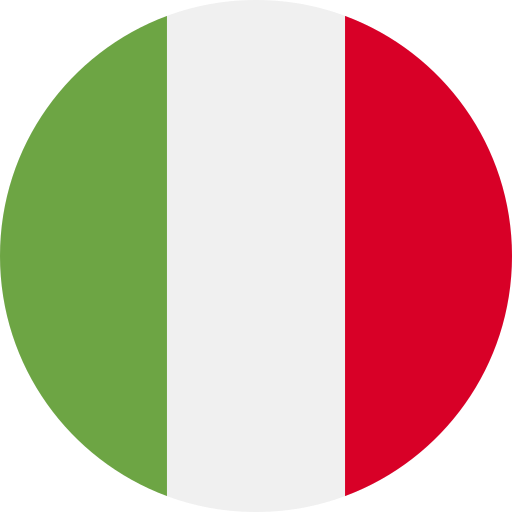Key Takeaways
- Historical Origins: The Italian language evolved from Latin, shaped by the Roman Empire’s influence and later regional dialects that emerged post-Empire.
- Literary Contributions: Writers like Dante Alighieri played a crucial role in standardizing Italian during the Renaissance, promoting Tuscan dialects as foundational to modern Italian.
- Regional Diversity: Italy’s numerous regional dialects reflect its diverse culture and history, each contributing unique characteristics to the overall linguistic landscape.
- Unification Impact: The unification of Italy in the 19th century led to significant efforts in standardizing the language, fostering a cohesive national identity through a common linguistic framework.
- Modern Influences: Globalization and technology have introduced new vocabulary and expressions into Italian, particularly through media and social platforms, blending traditional forms with contemporary usage.
- Cultural Appreciation: Understanding the evolution of Italian enhances appreciation for both standard forms and regional variations, enriching interactions with native speakers.
Have you ever wondered how the Italian language evolved into the beautiful dialect we know today? The journey of Italian is a fascinating tale that spans centuries, shaped by history, culture, and even geography. From its roots in Latin to its modern-day variations, understanding this evolution can deepen your appreciation for the language.
Overview of Italian Language
The Italian language evolves from Latin, influenced by various historical and cultural factors. Its roots trace back to the Roman Empire, where Latin served as the lingua franca across vast territories. As the empire fell, regional dialects emerged, each shaped by local customs and languages.
Modern Italian primarily derives from Tuscan dialects, particularly those spoken in Florence during the 14th century. Writers like Dante Alighieri played a crucial role in standardizing the language through their literary works. By promoting a unified form of Italian, they laid the groundwork for what would become Italy’s national language.
Throughout history, Italy experienced significant political and social changes that further impacted linguistic development. The Renaissance sparked a renewed interest in classical literature and arts, enriching vocabulary and expression within the language. Additionally, Italy’s unification in the 19th century helped solidify a common linguistic identity among its diverse regions.
Today, you encounter numerous dialects across Italy—each with unique characteristics yet rooted in shared origins. These dialects reflect local traditions and cultures while contributing to the rich tapestry of modern Italian.
Understanding this evolution enhances appreciation for both standard Italian and its regional variations. This knowledge also enriches interactions with native speakers or when exploring voiceover projects that require authentic representation of Italy’s linguistic landscape.
Historical Roots of Italian Language
Italian’s roots trace back to Latin, the language of the Roman Empire. As Latin evolved, it produced various dialects across Italy, leading to the rich linguistic heritage seen today.
Latin Influence
Latin forms the backbone of modern Italian. The transformation began around 500 AD when Vulgar Latin emerged from classical Latin, spoken by common people. This vernacular version laid the groundwork for regional variations that would develop over centuries. By integrating elements from other languages and cultures encountered through trade and conquest, Italian absorbed vocabulary and expressions that enriched its lexicon. Writers like Dante Alighieri utilized this evolving language in their works, helping to shape what we now recognize as standard Italian.
Regional Dialects
Regional dialects reflect Italy’s diverse culture and geography. Each region boasts unique linguistic features influenced by historical events and neighboring languages. For instance, Sicilian showcases Arabic influences due to centuries of Arab rule, while Venetian incorporates elements from Slavic languages owing to its trading history. These dialects not only contribute richness but also illustrate local traditions and identities.
Understanding these historical roots enhances your appreciation for both standard Italian and its many regional variants. Whether you’re engaging with native speakers or delving into voiceover projects requiring authentic representation of Italy’s linguistic landscape, recognizing this evolution is essential for effective communication and connection.
Major Milestones in Italian Language Evolution
Italian language evolution features several significant milestones that shaped its development. Understanding these points enhances your appreciation for the rich history of this beautiful language.
The Renaissance Period
The Renaissance period, spanning the 14th to the 17th century, marked a pivotal moment for Italian. This era experienced a cultural flourishing, influencing not just art and literature but also language. Writers like Dante Alighieri and Petrarch emphasized vernacular speech over Latin, promoting Tuscan dialects as foundational. Their works laid the groundwork for modern Italian, showcasing how literature can elevate spoken language into an artistic medium.
Standardization Efforts
Standardization efforts began in earnest during Italy’s unification in the 19th century. Prior to this time, regional dialects dominated communication across various parts of Italy. The government pushed for a unified national language to foster national identity and facilitate communication among diverse regions. Publications in standardized Italian emerged alongside educational reforms that prioritized teaching this version of the language. These initiatives significantly reduced dialectal variations and established a more cohesive linguistic framework throughout the country.
By recognizing these major milestones in Italian’s evolution—both culturally and politically—you gain insight into how historical events shape languages today.
Modern Influence on Italian Language
Modern influences shape the Italian language significantly, reflecting global trends and technological advancements.
Globalization and Media
Globalization exposes Italian to diverse languages and cultures. The spread of media—films, music, and television—introduces new vocabulary and expressions. You might notice English words in everyday use, especially in technology and business contexts. Terms like “computer,” “marketing,” or “internet” have seamlessly integrated into conversations. Additionally, popular media promotes certain dialects over others, impacting how younger generations perceive traditional forms of the language. This blend creates a dynamic linguistic landscape where Italian continues to evolve while maintaining its rich heritage.
Technology and Social Media
Technology revolutionizes communication methods, altering the way you interact with the language. Platforms like Instagram and TikTok encourage users to create content in colloquial Italian, often mixing in foreign phrases for flair. Voiceovers in social media videos also play a crucial role; they bring characters to life while showcasing regional dialects or contemporary slang. As a result, you may encounter an informal style that resonates more with younger audiences than traditional grammar rules do. This shift not only reflects changing linguistic practices but also reinforces a sense of community among speakers as they share their unique interpretations of modern Italian.
Understanding these influences enriches your appreciation for the language’s adaptability and resilience amidst change.
Conclusion
The Italian language’s journey from its Latin origins to the vibrant tapestry of dialects today showcases its resilience and adaptability. Understanding this evolution not only enhances your appreciation for Italian but also deepens your connection to Italy’s rich history and culture.
As you navigate this dynamic linguistic landscape, you’ll find that both standard Italian and regional variations offer unique expressions of identity. Embracing these differences can enrich your interactions with native speakers and provide insights into Italy’s diverse heritage. With globalization continually reshaping languages, staying curious about Italian’s ongoing transformation will keep your learning experience engaging and relevant.
Frequently Asked Questions
What is the origin of the Italian language?
The Italian language evolved from Latin, specifically Vulgar Latin, around 500 AD. It developed into various dialects influenced by historical and cultural factors over centuries.
How did Tuscan dialects influence modern Italian?
Tuscan dialects, particularly those spoken in Florence during the 14th century, were crucial for standardizing modern Italian. Writers like Dante Alighieri promoted these dialects as foundational for the language.
What role did the Renaissance play in shaping Italian?
The Renaissance (14th to 17th century) marked a cultural flourishing that greatly impacted the Italian language. Influential writers emphasized vernacular speech, promoting regional dialects leading to modern standardization.
How has globalization affected the Italian language?
Globalization has introduced new vocabulary through media exposure, especially from English. This influence is evident in technology and business terms often incorporated into everyday Italian conversations.
Are there still many regional dialects in Italy today?
Yes, Italy boasts diverse regional dialects reflecting its rich culture and geography. These variations continue to thrive despite efforts towards linguistic unification across the country.
How does social media impact contemporary Italian usage?
Social media platforms like Instagram and TikTok promote colloquial expressions and blend foreign phrases with regional dialects. This dynamic environment enriches both standard and regional variants of the language.







